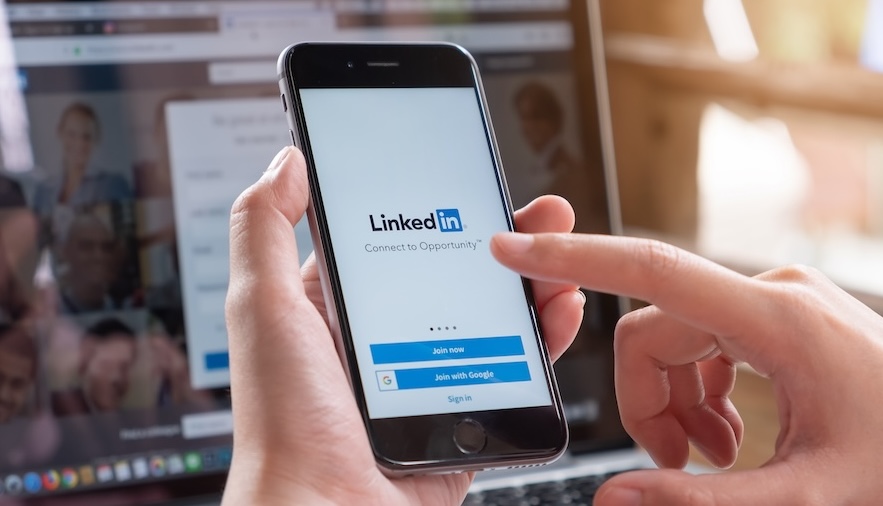Here Is How to Better Leverage LinkedIn for Your Comms Work
By John Elsasser
October 2024
According to Muck Rack’s “State of PR” 2024 report, communications professionals surveyed said that LinkedIn is the most valuable social platform (more than X, Instagram, Facebook and TikTok combined), and 17% say it’s the most effective channel for pitching journalists, who are increasingly turning to the platform to post about stories they’re working on, find sources, and share their work.
The report makes it clear that LinkedIn has become a critical channel for PR professionals to not only connect with journalists and move their work forward but also a key distribution channel where they can control their narrative and engage directly with a business audience.
Here, Callie Schweitzer, head of community programs at LinkedIn, discusses integrating the platform into your comms strategy and provides some best practices, tips, and tools for using it.
Muck Rack’s 2024 “State of PR” report, 50% of PR professionals said that LinkedIn is their most valuable social platform. From your perspective at LinkedIn, what’s behind this shift away from other platforms?
LinkedIn has grown as an editorial ecosystem that business leaders, brands, publishers and journalists are all finding increasing value in. It’s the only platform that enables companies and business leaders to reach all of their key professional audiences — employees, customers, investors, industry peers — globally, all in the same place.
Many comms professionals will tell you that building relationships with journalists is one of the most important parts of the job — but it’s not always easy to do. Since LinkedIn is where people go for networking and relationship-building, it offers communications professionals a more natural, direct and authentic way to connect with journalists.
What specific features of LinkedIn make it a valuable tool for PR professionals compared to other social platforms?
When a journalist needs a source for a story, they often need it quickly. Comms professionals can follow journalists and then set up notifications so they’ll be the first to know when a journalist shares a new post seeking help or feedback on a pitch.
People consume content in many different ways, and LinkedIn provides a variety of storytelling formats to showcase your company’s news and perspectives. Video is something in particular we’re really seeing take off — it’s one of our members favorite ways to consume content, and uploads are up 34% YoY globally. Newsletters and short-form posts are also great ways to announce news and provide behind-the-scenes context on why certain business decisions were made.
The question of measurement is one that comms professionals grapple with daily, and so one of the features that many PR people love is that LinkedIn offers analytics that demonstrate who their posts are reaching — down to details like the job titles, industries and companies that are seeing the content.
These analytics can be downloaded and shared with your team for further analysis and planning, and can be really beneficial for comms professionals who want a more precise understanding of the reach and ROI on their content.
Thought leadership is a big part of many comms professionals’ remits when it comes to executive branding, and LinkedIn is the perfect place to start building that momentum and strategy.
Having your executives consistently post about relevant and timely topics — related to your business, the industry as a whole, or other trending topics — can be a powerful tool for positioning them as experts and innovators within their industry. Executives who share those perspectives directly from their own accounts see it’s one of the best ways to build authenticity and trust.
LinkedIn can also be a really important place to reach your employees and give them more context and understanding about what’s happening at the company. That transparency can go a long way in building employee trust, engagement and company pride, and can also attract potential talent to join the ranks, too.
Are there specific tools or features on LinkedIn that PR professionals should know about to enhance their comms efforts?
LinkedIn offers a variety of content formats that can showcase your news in different ways. This includes newsletters — in the past year, we have seen a 59% increase in people publishing newsletters, as well as a 47% increase in engagement on newsletters — as well as LinkedIn Lives, short-form videos, and articles.
By leveraging these various formats, you can reach the widest audience possible. You also have the option to boost posts on LinkedIn, if there’s a news announcement that you’re particularly wanting to make sure people hear about.
What trends do you see emerging in the use of LinkedIn for PR purposes?
C-suite leadership is really taking a front seat when it comes to communications. There’s been a 23%-plus jump in posts from chief executives in the past year, a 39%-plus increase year over year in CEO followers, and on average, posts from CEOs receive 8x more impressions and 4x more engagement than other posts.
CEOs are increasingly using LinkedIn to share complementary posts and videos that provide additional context and information on their earnings reports. We’ve seen these types of posts from Ralph Lauren CEO Patrice Louvet, Shopify CEO Harley Finkelstein, Barclays CEO CS Venkatakrishnan, Diageo CEO Debra Crew and Philips CEO Roy Jakobs and Deutsche Telekom AG CEO Tim Höttges.
Spotify CEO Daniel Ek is a great example of an exec using LinkedIn for thought leadership and directly connecting with his audience. In his first 9 months posting on LinkedIn, he drove 5.3M post impressions and gained over 130K professional followers from more than 200 countries, attracting an influential audience of CEOs and founders.
Alexa von Tobel, founder and managing partner at Inspired Capital, shares her interviews with business leaders like Ethan Brown, founder and CEO of Beyond Meat and actor and serial entrepreneur Edward Norton. She shares their business predictions and how they tackle business challenges and posts about her own takes on business trends, like “Founder Mode.”
We’re also seeing that top executives are posting more exclusive content to LinkedIn. For example, earlier this year, Ford CEO Jim Farley made the decision to post an exclusive op-ed on LinkedIn about why he’s bullish on EVs.
Ultimately the op-ed was picked up by Barron’s, InsideEVs, Electrek, Boston Herald, Detroit News and others, and saw thousands of engagements across likes, comments and reshares.
In May, Starbucks founder Howard Schultz made headlines after taking to LinkedIn to address the company’s missed shareholder expectations. Do you think posting on a platform like LinkedIn made the announcement more high-profile than if Starbucks had placed the statement in a company newsroom or blog?
More and more, we’re seeing the power of LinkedIn in amplifying a company’s breaking news in a way that doesn’t typically happen with a company newsroom or blog post. So there’s certainly a flywheel effect that starts to take place.
We also know that the posts that see the most engagement on LinkedIn are the ones that come directly from business leaders and share a behind-the-scenes look that resonates more deeply with readers and feels more personal. Readers feel like they’re getting it straight from the source, rather than hearing from a corporate statement, which feels more intimate and authentic.
Schultz’s post had a lot of the key ingredients that we see in high engagement posts - timeliness, an authentic, first person voice, an insider perspective on the news, and it was posted exclusively in one place - all of which could have played a role in helping it take off.
A more recent example of a CEO’s posts driving conversation and headlines happened in July, when Crowdstrike experienced outages that left many companies in a lurch. Over the course of a few days, Crowdstrike CEO George Kurtz took to LinkedIn to give customers and other stakeholders real-time updates on the progress, and his posts were referenced many times in media coverage of the event.
Based on this, how can PR professionals leverage LinkedIn to share company news and drive media coverage?
My number one tip for any PR professional who wants to leverage LinkedIn to drive media coverage is to use the platform authentically every day, not just when you want to share news. Be someone who people see around LinkedIn a lot and are familiar with.
To make the most of LinkedIn as a comms channel, focus your strategy around the types of content that we know resonates most with LinkedIn members – it’s not just sharing breaking news or announcements, it’s providing some sort of valuable insight or takeaway. Put your senior leadership executives front and center to build that authentic connection and transparency with the audiences that matter most to them.
Encourage your spokespeople to lean into video – it doesn’t have to be something formal or overly produced – we’re seeing a ton of engagement around more casual videos that add context to a news announcement, like this one from Diageo CEO Debra Crew, and this one from Barclays CEO CS Venkatakrishnan.
And if you’ve got breaking news in the works, reach out to LinkedIn News with a heads up so they can consider covering it in a LinkedIn News storyline or sharing it as a notification. LinkedIn’s editorial team is made up of 230 members across 16 countries, and LinkedIn's editorial content reaches 600 million-plus people in 134 countries and in 14 languages every day
What are some best practices for engaging with journalists on LinkedIn?
Increasingly, journalists are taking to LinkedIn to publish their work, research sources and request help in finding them, and uncover the business trends and topics that professionals are buzzing about. Since 2016, we’ve seen an 8% increase in journalists on the platform, and there are 500-plus publishers who are sharing news and content on LinkedIn.
A great way to start building relationships with journalists on LinkedIn is to start following them and engaging with their posts. Many journalists are regularly sharing the stories that they’re working on and the sources they’re looking for, so following them and setting up your notifications so you see their posts in real time can help you respond quickly to journalists’ inquiries.
When industry news breaks, journalists are immediately going to social media to see how people are reacting. Encourage your executives to post timely reactions that will help journalists in their reporting and flag those posts directly to reporters. And finally, one of the things that journalists say they appreciate most from PR people on LinkedIn is simply when they like, share and engage with their stories — it shows genuine interest and demonstrates that you want to support their work.
Don’t just take it from us — here’s what CNBC’s Morgan Smith has to say: “The best way to engage with journalists on LinkedIn, in my experience, is to follow them on the platform so you can stay informed about what they’re working on and be one of the first to engage with their posts if/when they seek help or feedback on a pitch. I read all of the comments and messages I receive on LinkedIn and always remember the folks who regularly like/comment on my content and follow me! Those are all helpful indicators that someone is genuinely interested in the work I do and wants to support it.”



